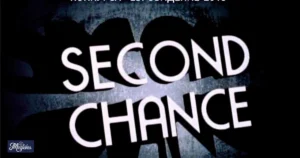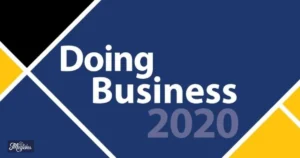“Explore alternative ways to invite communication effectively.”
In today’s fast-paced world, effective communication is crucial. Whether you’re crafting a professional email, managing client relations, or reaching out to colleagues, the way you express your openness to communication can make a significant impact. The phrase “Please don’t hesitate to reach out” is a common and polite way to encourage others to contact you. However, using varied language can add nuance and personalization to your interactions.
Offering alternative ways to invite communication can also enhance your professional and personal relationships. It allows you to tailor your message to different contexts, making your invitations more engaging and less repetitive. This blog will provide you with 25 alternative phrases that can be used in place of “Please don’t hesitate to reach out.” These suggestions will help you maintain a conversational tone while effectively encouraging communication.
Understanding the different ways to convey openness to dialogue can improve your interactions with others. Whether you are drafting an email, creating a presentation, or speaking in a meeting, these alternatives can help you communicate more clearly and professionally. Read on to discover various expressions and learn how to use them in different scenarios.
Alternative Phrases
1. Feel Free to Contact Me
Scenario: When Jessica finished her project and sent the final report to her client, she included this phrase in her closing remarks.
Explanation: This phrase is inviting and informal, suggesting that the recipient should not worry about the formality of reaching out. It implies that the communication is welcome at any time.
Additional Tip: Use this in casual communications where a friendly tone is appropriate.
2. Don’t Think Twice About Reaching Out
Scenario: Alex sent a follow-up email to a potential business partner, using this phrase to ensure they felt comfortable making contact if needed.
Explanation: This expression suggests that reaching out is encouraged and that the recipient should feel no hesitation or concern about doing so.
Additional Tip: Ideal for less formal interactions where you want to convey that reaching out is both easy and encouraged.
3. I’m Here If You Need Me
Scenario: When Lisa provided her contact information to her team for the upcoming project, she included this phrase in her message.
Explanation: This phrase communicates availability and readiness to assist, making it clear that the person is willing to help as needed.
Additional Tip: Use this when you want to emphasize your willingness to provide support or guidance.
4. Feel Free to Get in Touch
Scenario: Mark sent out a newsletter with updates about the upcoming event and ended with this phrase to encourage questions or feedback.
Explanation: This phrase is friendly and casual, suitable for encouraging open lines of communication without pressure.
Additional Tip: Useful in situations where you want to make the recipient feel at ease about initiating contact.
5. Reach Out Anytime
Scenario: During a team meeting, Sarah let her colleagues know they could reach out with questions by using this phrase in her follow-up email.
Explanation: This phrase assures the recipient that they are welcome to make contact whenever they need to, emphasizing availability and openness.
Additional Tip: Best used when you want to convey that you are always accessible for communication.
6. I’m Available for Any Questions
Scenario: Tom sent a detailed report to his clients, including this phrase to indicate his willingness to answer any inquiries they might have.
Explanation: This phrase highlights your availability specifically for answering questions, which can be helpful in professional contexts.
Additional Tip: Use this when your primary role is to provide answers or clarifications.
7. Don’t Hesitate to Get in Touch

Scenario: Emily sent out her contact details to the new interns and used this phrase to encourage them to reach out if they needed assistance.
Explanation: This phrase is a direct invitation to contact you, removing any hesitation the recipient might feel about initiating communication.
Additional Tip: Effective in both formal and informal settings where encouragement is needed.
8. I’m Happy to Assist
Scenario: Rachel sent a thank-you note to a client, adding this phrase to reaffirm her willingness to help with any further needs.
Explanation: This phrase conveys a positive attitude and eagerness to provide assistance, creating a supportive atmosphere.
Additional Tip: Best used when you want to express enthusiasm about helping.
9. Feel Welcome to Reach Out
Scenario: During a webinar, John encouraged attendees to contact him with any follow-up questions using this phrase.
Explanation: This phrase creates a welcoming environment for communication, making it clear that the recipient’s outreach is encouraged and valued.
Additional Tip: Useful in settings where you want to make the recipient feel comfortable reaching out.
10. I’m Just a Call Away
Scenario: Anna concluded her presentation with this phrase to let participants know she was readily available for further discussion.
Explanation: This phrase implies that reaching out is easy and that you are readily accessible, whether by phone or other means.
Additional Tip: Ideal for scenarios where you want to convey immediate availability.
11. Please Reach Out If You Have Any Questions
Scenario: Kevin sent out a detailed guide to his team, including this phrase to invite any questions or clarifications.
Explanation: This phrase explicitly invites the recipient to contact you with questions, providing a clear call to action.
Additional Tip: Effective when you want to ensure that any potential queries are addressed.
12. I’m Available for Follow-Up
Scenario: Laura sent an email summarizing a recent meeting and included this phrase to offer additional follow-up if needed.
Explanation: This phrase signals that you are open to further discussions or clarifications, emphasizing your availability.
Additional Tip: Useful in professional contexts where follow-up is expected or encouraged.
13. Let Me Know If You Need Anything
Scenario: When Mark sent out his project plan, he added this phrase to ensure team members felt comfortable asking for any additional resources or help.
Explanation: This phrase offers broad assistance, inviting the recipient to reach out for anything they might need.
Additional Tip: Best used when you want to offer general support and assistance.
Polite Ways to Say “Bring to Your Attention”
14. I’m Open to Discussion
Scenario: Lisa sent out her proposal and used this phrase to indicate that she was ready to discuss any aspects of it further.
Explanation: This phrase emphasizes your openness to engage in further conversation, particularly in discussions or negotiations.
Additional Tip: Ideal for situations requiring in-depth discussion or negotiation.
15. Feel Free to Drop Me a Line
Scenario: John included this phrase in his casual email to friends, inviting them to contact him if they wanted to catch up.
Explanation: This informal phrase invites communication in a relaxed manner, suitable for casual contexts.
Additional Tip: Use this when a less formal, friendly tone is appropriate.
16. I’m Here for Any Support You Need
Scenario: Sarah concluded her support email with this phrase to assure the recipient of her ongoing assistance.
Explanation: This phrase conveys that you are available to provide support, making it clear that help is always available.
Additional Tip: Effective when you want to emphasize your role as a source of support.
17. Feel Free to Reach Out for Clarifications
Scenario: When sending a complex report, Tom used this phrase to encourage recipients to contact him for any needed clarifications.
Explanation: This phrase is useful when you anticipate that the recipient may need additional explanations or clarifications.
Additional Tip: Ideal for detailed or technical communications.
18. I’m Ready to Help
Scenario: Emily used this phrase in her email to clients, reassuring them of her readiness to assist with any issues or questions.
Explanation: This phrase signals that you are prepared and willing to help, emphasizing readiness.
Additional Tip: Best used when you want to convey that you are eager and prepared to assist.
19. Don’t Be Shy About Reaching Out
Scenario: During a team-building workshop, Rachel encouraged participants to use this phrase to ensure they felt comfortable asking questions.
Explanation: This phrase is informal and friendly, encouraging communication without hesitation or embarrassment.
Additional Tip: Suitable for informal or group settings where a relaxed tone is beneficial.
20. I’m Always Available for You
Scenario: Kevin concluded his client follow-up with this phrase to emphasize his ongoing availability for support.
Explanation: This phrase indicates continuous availability, reassuring the recipient that they can contact you at any time.
Additional Tip: Use this when you want to highlight that you are consistently accessible.
21. Feel Free to Reach Out Whenever You Need
Scenario: Lisa used this phrase in her email to new hires, letting them know they could contact her anytime for assistance.
Explanation: This phrase assures that the recipient can reach out at any time, providing a sense of continuous support.
Additional Tip: Ideal for ongoing relationships or when you want to convey that help is always available.
22. I’m Happy to Answer Any Questions

Scenario: Sarah sent out a survey and included this phrase to let respondents know they could contact her with any questions about the survey.
Explanation: This phrase explicitly states that you are available to answer questions, focusing on providing clarity.
Additional Tip: Useful when you want to address potential questions directly.
23. Please Feel Free to Connect
Scenario: Mark used this phrase in his LinkedIn profile to encourage connections and communications from other professionals.
Explanation: This phrase invites communication in a professional context, suggesting ease and openness.
Additional Tip: Effective for networking situations where you want to encourage professional connections.
24. I’m Here to Help You Out
Scenario: Emily used this phrase in her email signature to remind clients of her readiness to assist.
Explanation: This phrase is casual and reassuring, indicating that you are available to offer help whenever needed.
Additional Tip: Suitable for informal or supportive communication.
25. Feel Free to Reach Out at Your Convenience
Scenario: John sent a follow-up email to his contacts, using this phrase to emphasize that they could contact him at a time that suited them best.
Explanation: This phrase conveys flexibility and respect for the recipient’s schedule, making it easier for them to reach out.
Additional Tip: Best used when you want to accommodate the recipient’s timing preferences.
Pros and Cons
Pros:
- Variety in Expression: Using different phrases can make your communication more engaging and tailored to different contexts.
- Enhanced Professionalism: Tailoring your communication can enhance your professional image and effectiveness.
- Encourages Engagement: Alternative phrases can make recipients feel more comfortable and encouraged to reach out.
Cons:
- Potential Confusion: Overusing or mixing phrases might confuse the recipient if not aligned with the context.
- Inconsistency: Using too many variations might lead to a lack of consistency in communication style.
- Cultural Differences: Some phrases might be interpreted differently in various cultural contexts.
Conclusion
Exploring alternative ways to say “Please don’t hesitate to reach out” can enhance your communication, making it more versatile and tailored to different situations. By employing these varied expressions, you can ensure your message is clear, inviting, and professional.
Whether in formal emails, casual conversations, or professional settings, having a range of phrases at your disposal allows you to effectively encourage communication and support. Remember to choose the phrase that best fits the context and tone of your message for the best results.

Hi, I’m Zadie Smith: I’m dedicated to helping others master English through practical tips. I enjoy making complex ideas simple and accessible for everyone.










